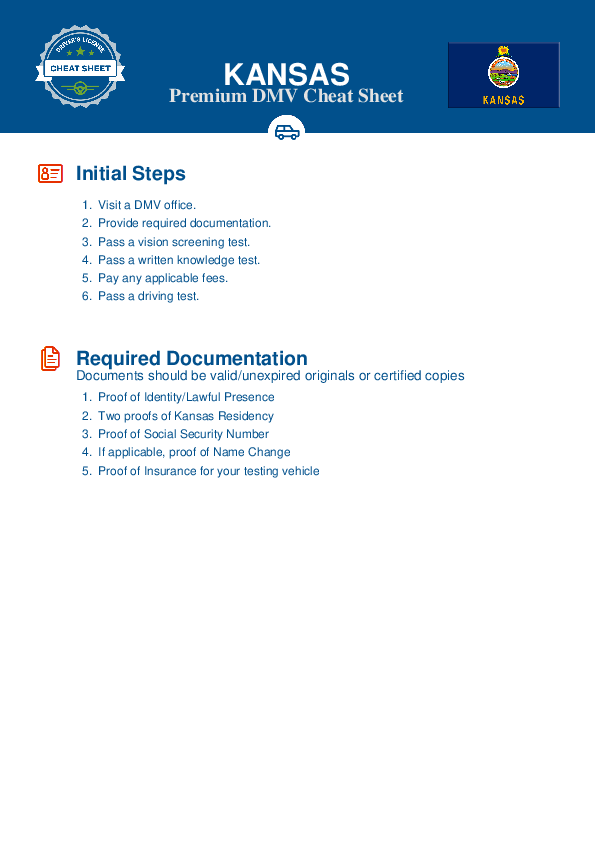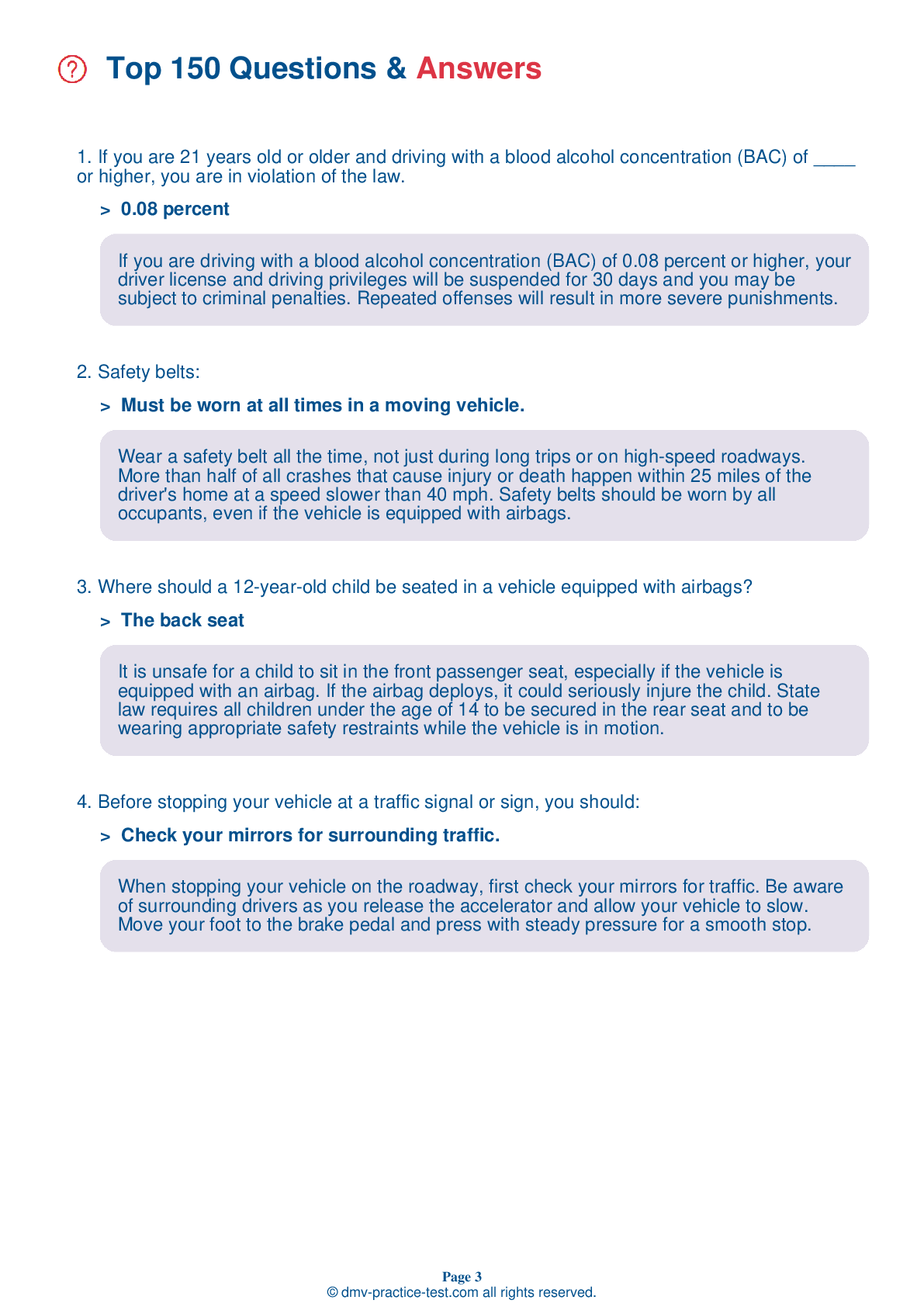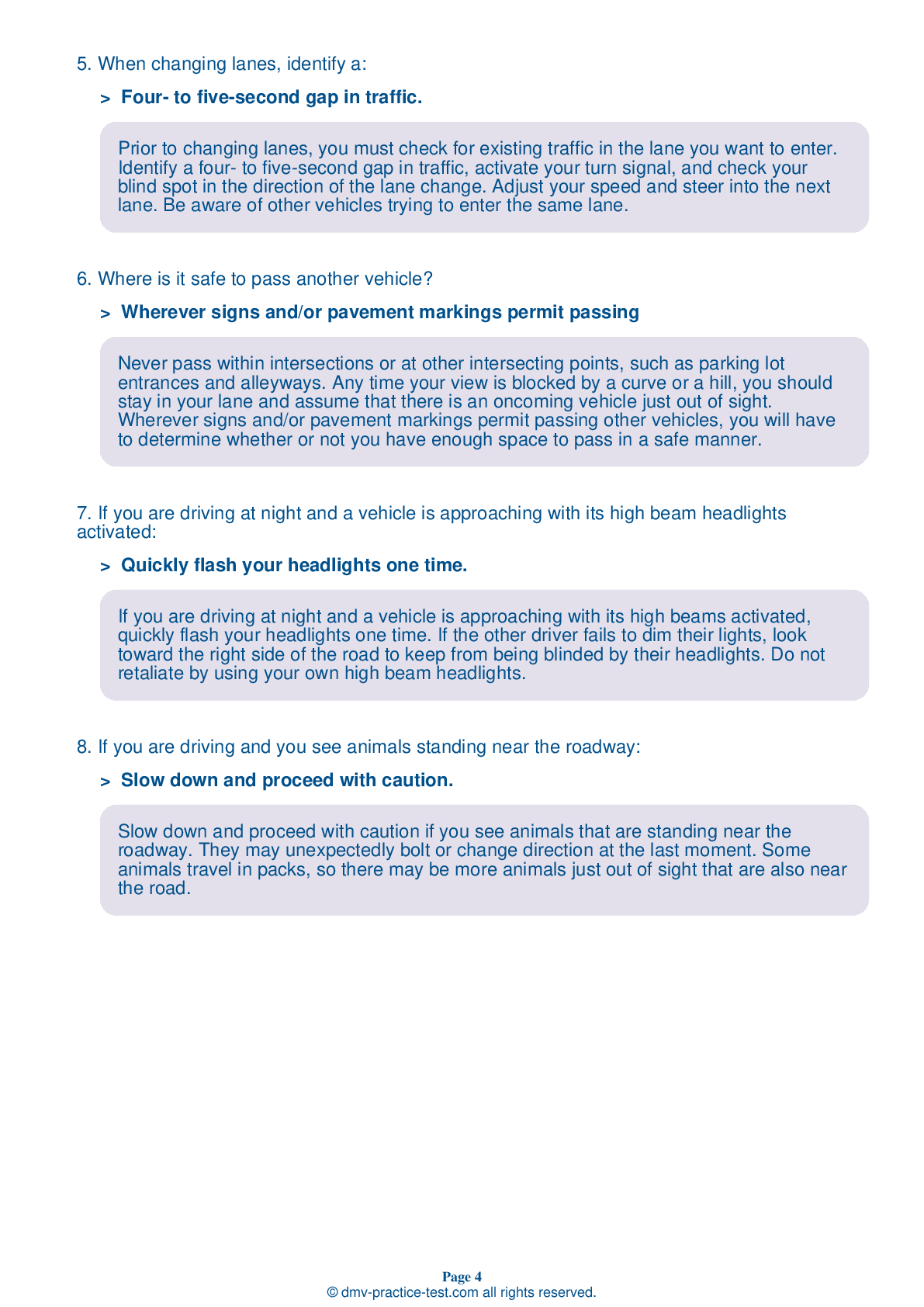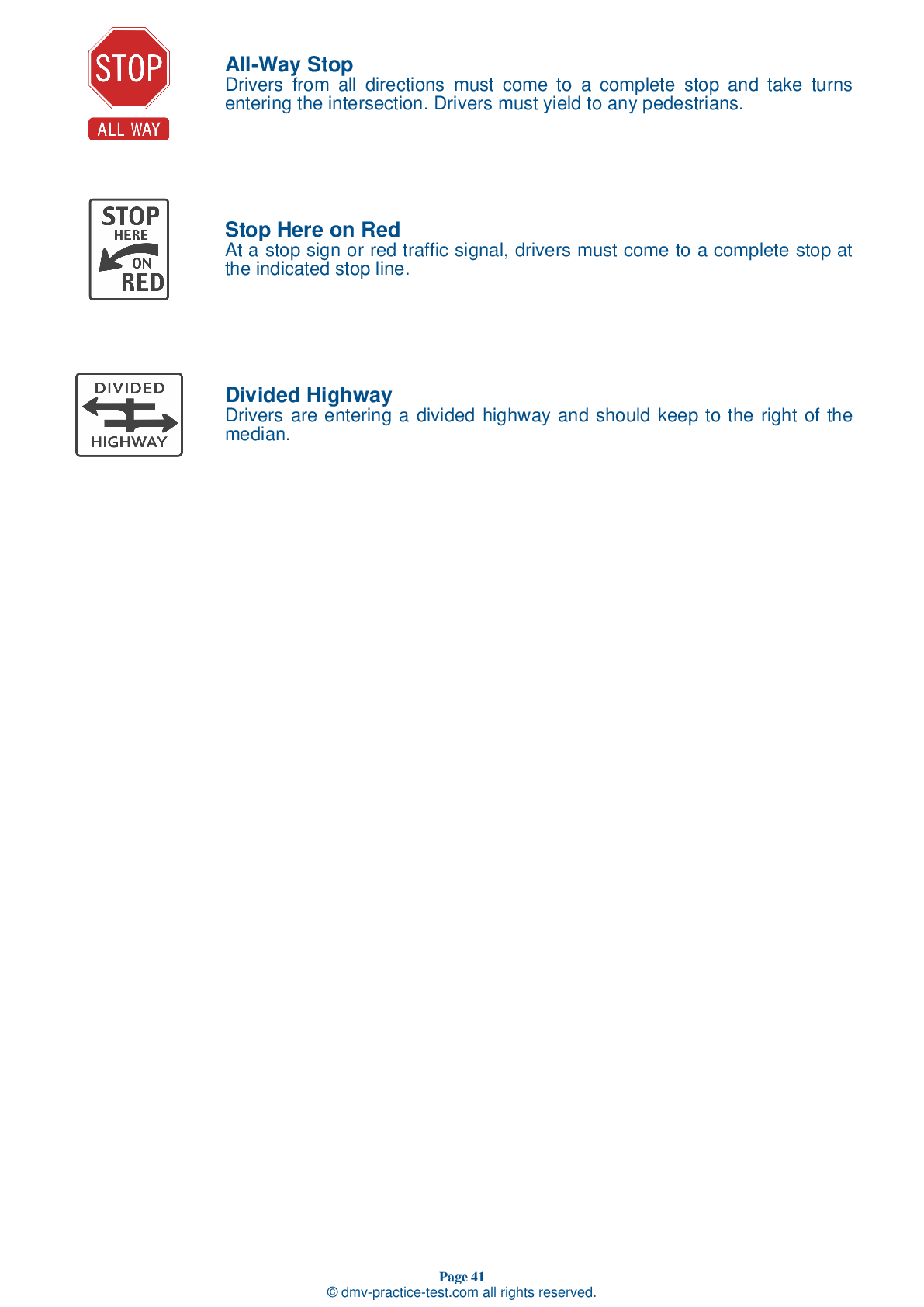FREE Kansas DMV Practice Test #19
In Kansas, the DMV practise tests have been revised for January 2025. It includes questions based on the Kansas Driver Handbook's most essential traffic signals and regulations for 2025. Use actual questions that are very similar (often identical!) to the DMV driving permit test and driver's licence exam to study for the DMV driving permit test and driver's licence exam.
On the practise exam, each question gets a tip and explanation to help you remember the concepts. The written component of the official Kansas DMV test will include questions about traffic rules, traffic signs, and driving statutes, as well as information from the Driver Handbook.
To obtain a passing grade, you must correctly answer 20 of the 25 questions. Take our DMV practise exam to help you prepare for your Kansas instruction permit or driver's licence.
The DMV exam is available in several languages.
Using any kind of testing assistance will result in an automatic fail, and the DMV may take additional action against your driver's licence, so stay away from it.
1 . When turning left from a two-way street onto a one-way street, you should:
When making any turn, turn from the lane closest to the direction you wish to travel into the first available legal lane. On a turn from a two-way to a one-way street, this means you should turn into the first lane.
2 . Your license will:
Your license will expire on your birthday. At least 30 days prior to the expiration of your license, the Division of Vehicles will mail either a notice of expiration or a renewal application to your home address.
3 . Which of these statements is true about large trucks?
Large trucks take longer to stop than other vehicles traveling at the same speed. The average passenger vehicle traveling at 55 mph can stop within 400 feet. However, a large truck traveling at the same speed can take almost 800 feet to stop.
4 . A solid yellow arrow on a traffic signal means:
A solid yellow arrow means that the protection of a green arrow is ending. If you are turning in the direction of the arrow, you should prepare to stop and yield the right-of-way to oncoming traffic before turning.
5 . Where is it safe to pass another vehicle?
Never pass within intersections or at other intersecting points, such as parking lot entrances and alleyways. Any time your view is blocked by a curve or a hill, you should stay in your lane and assume that there is an oncoming vehicle just out of sight. Wherever signs and/or pavement markings permit passing other vehicles, you will have to determine whether or not you have enough space to pass in a safe manner.
6 . If you approach a stopped school bus that has its lights flashing and signal arm extended, you should:
If you approach a stopped school bus that has its lights flashing and arm extended, you must come to a full stop and remain stopped until the signal arm is pulled back and the bus resumes motion. This law applies whether you are traveling in the same direction as the bus or if you are approaching from the opposite side of the street.
7 . When passing on the left of a vehicle, it is safe to move back into the right lane:
When passing another vehicle on its left, you may move back into the right lane when the headlights of the passed vehicle can be seen in your rearview mirror. Always signal before changing lanes.
8 . This sign means:
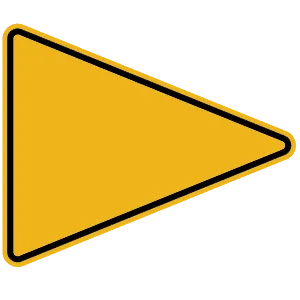
A triangular yellow sign with black lettering indicates a no passing zone. It will appear on the left side of a two-way, two-lane roadway at the beginning of an area where prohibitive pavement markings are also used.
Need Car Insurance? No problem!
Compare the best rates in Kansas and find a personalized policy that meets your needs.
1. Are You Currently insured ?
2. Married ?
3. Do you own your Home?
4. Do you have more than 1 car ?
5. Have you or a Family Member Honorably Served in U.S. Military ?
6. Your Name
7. Age
8. Zip code
IMPORTANT REMINDER:Auto Insurance is Mandatory to drive in Kansas. Get covered before you hit the road to avoid any fines.
Ranked by best match
